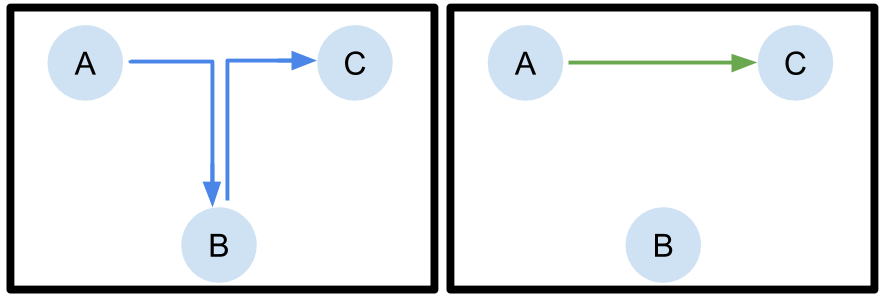
My favorite part of @NeurIPSConf is the workshops, a chance to see new ideas and late-breaking work. Our lab will present a number of papers & talks at workshops:
thread below ->
meanwhile here is a teaser image :)
thread below ->
meanwhile here is a teaser image :)
At robot learning workshop, @katie_kang_ will present the best-paper-winning (congrats!!) “Multi-Robot Deep Reinforcement Learning via Hierarchically Integrated Models”: how to share modules between multiple real robots; recording here: (16:45pm PT 12/11) 

At the deep RL workshop, Ben Eysenbach will talk about how MaxEnt RL is provably robust to certain types of perturbations. Contributed talk at 14:00pm PT 12/11.
Paper: drive.google.com/file/d/1fENhHp…
Talk: slideslive.com/38941344/maxen…
Paper: drive.google.com/file/d/1fENhHp…
Talk: slideslive.com/38941344/maxen…
Ben will also present C-Learning: a new algorithm for goal-conditioned learning that combines RL with principled training of predictive models. Deep RL poster session, 12:30 pm PT.
Paper: arxiv.org/abs/2011.08909
Website: ben-eysenbach.github.io/c_learning/
Talk: slideslive.com/38941367/clear…
Paper: arxiv.org/abs/2011.08909
Website: ben-eysenbach.github.io/c_learning/
Talk: slideslive.com/38941367/clear…
Also at deep RL WS posters, Jensen Gao&@sidgreddy will present “XT2: Training an X-to-Text Typing Interface”: how deep RL can assist users to type via gaze and other interfaces, esp. for persons with disabilities.
Paper: drive.google.com/file/d/12f2P2b…
Talk: slideslive.com/38941310/xt2-t…
Paper: drive.google.com/file/d/12f2P2b…
Talk: slideslive.com/38941310/xt2-t…
Ashvin Nair will present AWAC, offline RL with online finetuning, also at the deep RL WS poster session.
pres: slideslive.com/38941335/accel…
paper: arxiv.org/abs/2006.09359
blog: bair.berkeley.edu/blog/2020/09/1…
pres: slideslive.com/38941335/accel…
paper: arxiv.org/abs/2006.09359
blog: bair.berkeley.edu/blog/2020/09/1…
Also at deep RL WS posters, @timrudner @vitchyr will present “Outcome-Driven Reinforcement Learning,” describing how goal-conditioned RL can be derived in a principled way via variational inference.
Paper: timrudner.com/papers/Outcome…
Talk: slideslive.com/38941289/outco…
Paper: timrudner.com/papers/Outcome…
Talk: slideslive.com/38941289/outco…
Also at deep RL WS, Aviral Kumar will present “Implicit Under-Parameterization” – our work on how TD learning can result in excessive aliasing due to rank collapse.
Paper: arxiv.org/abs/2010.14498
Video:
Paper: arxiv.org/abs/2010.14498
Video:

Also at deep RL WS, @snasiriany and co-authors will present “DisCo RL”: RL conditioned on distributions, which provides much more expressivity than conditioning on goals.
Paper: snasiriany.me/files/disco_rl…
Presentation: slideslive.com/38941375/distr…
Poster: snasiriany.me/files/disco_rl…
Paper: snasiriany.me/files/disco_rl…
Presentation: slideslive.com/38941375/distr…
Poster: snasiriany.me/files/disco_rl…
At deepRL WS, @mmmbchang will present “Modularity in Reinforcement Learning: An Algorithmic Causality Perspective on Credit Assignment” how causal models help us understand transfer in RL!
Poster: bit.ly/2LjSelT
Paper: bit.ly/2KanyTK
Vid: bit.ly/3gxeMLp
Poster: bit.ly/2LjSelT
Paper: bit.ly/2KanyTK
Vid: bit.ly/3gxeMLp
At deep RL WS, and as long oral presentation at offline RL WS, @avisingh599 will present COG: how offline RL can chain skills and acquire a kind of “common sense”
Vid:
Web: sites.google.com/view/cog-rl
Blog: bair.berkeley.edu/blog/2020/12/0…
Offline RL talk 12/12 9:50am
Vid:
Web: sites.google.com/view/cog-rl
Blog: bair.berkeley.edu/blog/2020/12/0…
Offline RL talk 12/12 9:50am
At robot learning WS (8:45am PT poster) and real-world RL WS (12/12 11:20am poster), @avisingh599 will present PARROT: pre-training models that explore for diverse robotic skills.
Arxiv: arxiv.org/abs/2011.10024
Video:
Website: sites.google.com/view/parrot-rl
Arxiv: arxiv.org/abs/2011.10024
Video:
Website: sites.google.com/view/parrot-rl
At meta-learning workshop, Marvin Zhang will present Adaptive Risk Minimization, how models can learn to adapt to distributional shifts at test time via meta-learning.
Paper: arxiv.org/abs/2007.02931
Pres: slideslive.com/38941545/adapt…
Paper: arxiv.org/abs/2007.02931
Pres: slideslive.com/38941545/adapt…
Enjoy all the NeurIPS workshops!!
At deep RL WS, Abhishek Gupta & @its_dibya present GCSL (goal-conditioned supervised learning), a simple principled method to use supervised learning for RL!
Room B, B5, 1230-1330 & 18-19 PT
Paper arxiv.org/abs/1912.06088
Pres slideslive.com/38941275/learn…
Blog bair.berkeley.edu/blog/2020/10/1…
Room B, B5, 1230-1330 & 18-19 PT
Paper arxiv.org/abs/1912.06088
Pres slideslive.com/38941275/learn…
Blog bair.berkeley.edu/blog/2020/10/1…

Also at deep RL WS, Abhishek Gupta & Kevin Lin will present BayCLR -- normalized maximum likelihood (NML) + meta-learning for setting goals!
Room D, C7, Deep RL Workshop, 12:30-1:30 and 6-7 PST
Paper: drive.google.com/file/d/1sd7nWn…
Slideslive: slideslive.com/38941398/reinf…
Room D, C7, Deep RL Workshop, 12:30-1:30 and 6-7 PST
Paper: drive.google.com/file/d/1sd7nWn…
Slideslive: slideslive.com/38941398/reinf…

At DRL WS and robot learning WS, @_oleh, @chuning_zhu will present collocation-based planning for image-based model-based RL! By relaxing dynamics, robot images object "flying" to goal before figuring out how to move it
Video slideslive.com/38943304/latco…
paper drive.google.com/file/d/1zG9NxH…
Video slideslive.com/38943304/latco…
paper drive.google.com/file/d/1zG9NxH…
At ML4Molecules (ml4molecules.github.io), Justin Fu will present Offline Model-Based Optimization via Normalized Maximum Likelihood (NEMO), for optimizing designs from data w/ NML! 8:30am ML4Molecules poster session
Paper: drive.google.com/file/d/1u-SC7O…
Poster: drive.google.com/file/d/133R0Aa…
Paper: drive.google.com/file/d/1u-SC7O…
Poster: drive.google.com/file/d/133R0Aa…

At WS on challenges of real-world RL, B. Eysenbach will present DARC. Domain adaptation for RL: how to train RL agents in one domain, but have them pretend they are in another
Pres (1520 PT Sat 12/12) drive.google.com/file/d/1YwfWOv…
Paper arxiv.org/abs/2006.13916
blog.ml.cmu.edu/2020/07/31/mai…
Pres (1520 PT Sat 12/12) drive.google.com/file/d/1YwfWOv…
Paper arxiv.org/abs/2006.13916
blog.ml.cmu.edu/2020/07/31/mai…
• • •
Missing some Tweet in this thread? You can try to
force a refresh








